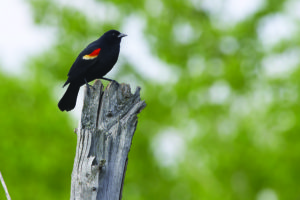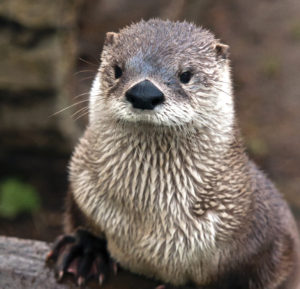Song of the Redwing
Learning Activities
About the Marsh
A marsh is part solid and part liquid; sometimes wet, sometimes soggy, sometimes spongy. It provides a vital habitat for a wide variety of plants (flora) and wildlife (fauna). Wetlands are amongst the most diverse and productive ecosystems on Earth. The fresh water that hydrates a marsh comes from the rivers and streams that flow into it. As a result, marshes are connected to every natural and human event upstream. This interconnectedness means that over-irrigation, chemical farming, land development and industrial pollution can threaten wetland survival. However, when the watercourses feeding the marsh are pure, its wildlife thrives.
The health of a marsh is important because, when vigorous, it purifies dirty air and water so plants and animals can safely breathe and drink. It helps protect neighboring lands from flooding by collecting and holding water, and marsh vegetation helps control erosion. Wetlands provide a home and nursery for a huge variety of life forms. Some species born into this habitat, such as shrimp, are essential to the vitality of fisheries.

Red-winged Blackbirds are native to North America. They eat insects, seeds, and grain. Their nests are built in cattails, marsh grasses or willow bushes, where the female lays 3 to 4 eggs. She sits on her eggs for up to 11 days, keeping them warm until they hatch. In the wild, Red-winged Blackbirds live for an average of two years. A group of blackbirds has many collective nouns, including a “cloud”, “cluster”, and “merl” of blackbirds.

River Otters have the ability to create and use tools just like beavers, monkeys, and apes. Male otters are called boars, females are sows, and the offspring are pups. River otters have the ability to remain underwater for eight minutes at a time. When they do this, they shut both their nostrils and ears tightly, so that absolutely no water can creep in. Otters can dive to depths of 300 feet (91 meters) in search of food.
Writing and Discussion Topics:
Research and discuss the importance of wetlands and how they benefit human and animal life. How many different types of wetlands are there? What types of flora and fauna live in a wetlands? How do they change according to the type of wetland? How would life in an area be impacted if the wetlands were not there? Are there any agencies in your community or state that work on wetlands conservation, what are they and what do they do?
Vocabulary Building:
Perched Sedge Bird-keen
Recedes Lagoon Staggering
Saplings Serenade Flair
Quilts Fleet Mooring
Quiver Lounge Crannies
Optical Illusion Habitat Spinners:
The book Song of the Redwing: Voice of the Wetlands introduces students to many different creatures and their habitats in a wetlands or marsh environment. In this activity, students will create a spinner that pairs a creature with an object from its environment.
Bird Research Papers:
The book Song of the Redwing: Voice of the Wetlands the author, Tish McFadden, mentions 21 different birds that live in a wetland environment. In this activity, students research one of the birds named in the story.
Shoebox Dioramas:
The book Song of the Redwing: Voice of the Wetlands introduces students to different creatures that live in a wetlands or marsh environment. In this activity, students re-create a scene from the book.

